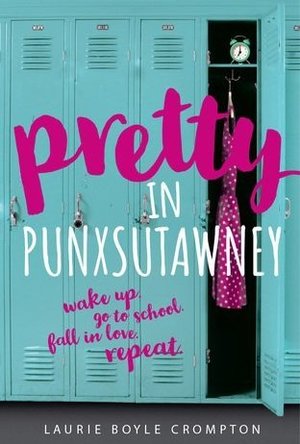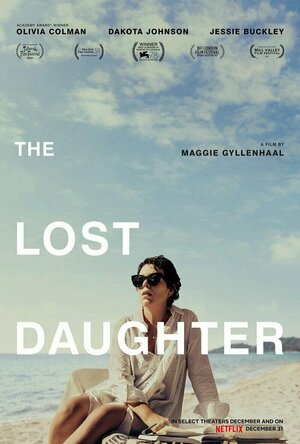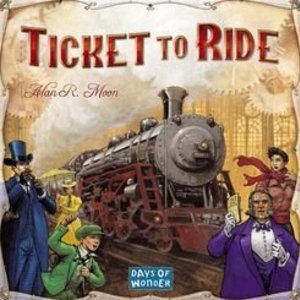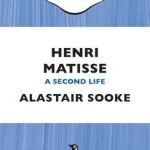
Henri Matisse: A Second Life
Book
Henri Matisse by Alastair Sooke - an essential guide to one of the 20th century's greatest artists...
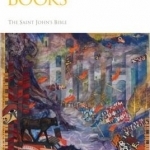
Historical Books
Book
Historical Books is the sixth of seven full color reproduction books from The Saint John's Bible. Of...
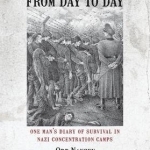
From Day to Day: One Man's Diary of Survival in Nazi Concentration Camps
Odd Nansen and Timothy J. Boyce
Book
In 1942 Norwegian Odd Nansen was arrested by the Nazis, and he spent the remainder of World War II...

Obstructive Sleep Apnea Screener
Medical and Health & Fitness
App
(V2.0.1 IS A RE-WRITE FOR iOS6+) Obstructive Sleep Apnea Screener provides access to screening...
Hazel (1853 KP) rated Birds Art Life Death: A Field Guide to the Small and Significant in Books
May 23, 2017
There comes a time when novelists, as with any creative professional, become unmotivated or at a loss as to what to write about – writer’s block. Such an occurrence happened to children’s novelist, Kyo Maclear. Through the work of her songwriter husband, Maclear discovers a musician struggling with the demands of his career in a competitive world, causing anxiety and depression. In order to distance himself from the stresses of his employment, the musician finds solace in bird watching. Intrigued as to what prompted his ardent interest in birds, Maclear tags along with him for a year, and thus, Birds Art Life Death: A Field Guide to the Small and Significant was born.
To preempt any confusion, despite what the title may suggest, this book is not a field guide about birds. When Maclear began talking to the musician (who remains anonymous except for a mention in the acknowledgements), she was completely nescient on the subject of birds and had a lot to learn. Although some facts are stated in the narrative, Birds Art Life Death is more a reflective memoir of the author’s life. Using bird watching as a key example, Maclear explores the ways artists of all kinds have retreated from the pressures of everyday life in order to take time to appreciate the smaller, less celebrated aspects.
Bird watching, in particular, provides the musician and Maclear the opportunity to sit still (literally) and just be. Paying attention to the numerous habitats of the winged-creatures provides the author with a new outlook on life, and fodder to include in future works (hence this book). It also gives her the opportunity to reflect on her past, her parents – particularly her anticipatory grief toward her elderly father – her husband, and her sons. In fact, the author’s own life features as heavily as the bird watching trips she goes on.
Written in chronological order from winter through to autumn, Maclear’s knowledge of birds increases, as does her awareness of the world and life around her. However, her sequence of events is often interrupted by retrospective thought and additional research, which causes the book to head in too many directions at once. It is as though the author’s disorganized mind has been spilled onto the page for everyone to see.
It is clear, however, that Maclear has put an exceptional amount of time into researching the topic of birds. She does not regurgitate factual, mundane information about the species; instead she has delved deeper and from an artistic point of view, to discover so much more than an encyclopedic textbook would provide.
From a myriad of resources, Maclear has pulled out quotes from bird enthusiasts and creative individuals alike to emphasise the effects birds have had on people’s lives and artistic careers. Interestingly, many artists and authors have found the delicate creatures fascinating and included them in their works, for example: Leonardo da Vinci, Charles Dickens, William Faulkner and Iris Murdoch.
Birds Art Life Death is unlikely to increase your knowledge of birds or bird watching, however it may inspire you to take time out to explore and enjoy nature. Whether you are a creative individual in need of a break, or an office worker desperately wanting some fresh air, Maclear encourages you to step back from the trials of life and find pleasure in the little, but highly significant, facts of being.
Hazel (1853 KP) rated Birds Art Life Death: A Field Guide to the Small and Significant in Books
Dec 7, 2018
There comes a time when novelists, as with any creative professional, become unmotivated or at a loss as to what to write about – writer’s block. Such an occurrence happened to children’s novelist, Kyo Maclear. Through the work of her songwriter husband, Maclear discovers a musician struggling with the demands of his career in a competitive world, causing anxiety and depression. In order to distance himself from the stresses of his employment, the musician finds solace in bird watching. Intrigued as to what prompted his ardent interest in birds, Maclear tags along with him for a year, and thus, <i>Birds Art Life Death: A Field Guide to the Small and Significant</i> was born.
To preempt any confusion, despite what the title may suggest, this book is not a field guide about birds. When Maclear began talking to the musician (who remains anonymous except for a mention in the acknowledgements), she was completely nescient on the subject of birds and had a lot to learn. Although some facts are stated in the narrative, <i>Birds Art Life Death</i> is more a reflective memoir of the author’s life. Using bird watching as a key example, Maclear explores the ways artists of all kinds have retreated from the pressures of everyday life in order to take time to appreciate the smaller, less celebrated aspects.
Bird watching, in particular, provides the musician and Maclear the opportunity to sit still (literally) and just be. Paying attention to the numerous habitats of the winged-creatures provides the author with a new outlook on life, and fodder to include in future works (hence this book). It also gives her the opportunity to reflect on her past, her parents – particularly her anticipatory grief toward her elderly father – her husband, and her sons. In fact, the author’s own life features as heavily as the bird watching trips she goes on.
Written in chronological order from winter through to autumn, Maclear’s knowledge of birds increases, as does her awareness of the world and life around her. However, her sequence of events is often interrupted by retrospective thought and additional research, which causes the book to head in too many directions at once. It is as though the author’s disorganized mind has been spilled onto the page for everyone to see.
It is clear, however, that Maclear has put an exceptional amount of time into researching the topic of birds. She does not regurgitate factual, mundane information about the species; instead she has delved deeper and from an artistic point of view, to discover so much more than an encyclopedic textbook would provide.
From a myriad of resources, Maclear has pulled out quotes from bird enthusiasts and creative individuals alike to emphasise the effects birds have had on people’s lives and artistic careers. Interestingly, many artists and authors have found the delicate creatures fascinating and included them in their works, for example: Leonardo da Vinci, Charles Dickens, William Faulkner and Iris Murdoch.
<i>Birds Art Life Death</i> is unlikely to increase your knowledge of birds or bird watching, however it may inspire you to take time out to explore and enjoy nature. Whether you are a creative individual in need of a break, or an office worker desperately wanting some fresh air, Maclear encourages you to step back from the trials of life and find pleasure in the little, but highly significant, facts of being.
Ivana A. | Diary of Difference (1171 KP) rated Pretty in Punxsutawney in Books
Jan 25, 2019
Andie is a teenage girl, who loves movies. She is the type of person that knows exactly what to say… after it’s too late to say it. She is quirky, cutishly nerdy, and adorable in a silly way. And when she moves to Punxsutawney (I don’t think I’ll ever pronounce this town correctly), on the first day in her new school, she gets caught up in an endless loop of having to re-live those 24 hours again and again.
As in the movies, she is convinced that the curse can be broken with a true love’s kiss, she goes on a mission to get the boy. But is he the right one? And is true love what breaks the curse?
Not knowing how to end the loop, Andie tries to get first kiss with a guy she thinks is her true love, and when that doesn’t work, she suddenly tries to make the different types of people hang out together and realise that it doesn’t matter how you look like, to be a good person.
I really loved the idea of the loop in a high-school theme, and that was the main reason that I wanted to read this book really badly. I also loved that the main idea of this book was that looks don’t matter, and don’t judge a book by its cover, but I think that the author took this meaning way too far into the book, and it became too unrealistic, that it was laughable.
I enjoyed the layout of the different types of kids in the school, the jocks, the cheerleaders, the goths, the school-paper girls, the nerds. They were all described very realistically, and I enjoyed the times when we would realise that prejudice doesn’t matter. I can relate to a lot of this, because I was hanging out with both nerds and jocks in my high-school times, being a sports person and being a ‘’weirdo’’ that wants to read at the same time.
I also somehow managed to like the movie references, even though at moments, they are too overwhelming, and sometimes completely unrelated to the plot in place.
What I didn’t like, is how Andie kept changing in order to fit, how her behaviour changed, and her mindset during different days. I did not like this at all. I think that a person should always keep being themselves, no matter who they talk to. Doing the thinks she kept doing, only to be liked by one guy was miserable. Ladies – you are beautiful, no matter what you wear or how you do your hair. If that guy really likes you, he wouldn’t care about all these things and he would see within.
In retrospective, this was an enjoyable read. I am glad I read it, but somehow I think I might’ve been too old to read it now. But for you guys that are still in high-school, or love reading about high-school, this one is definitely worth your time.
Thank you to Netgalley and Blink, for providing me a free copy of this book in exchange for an honest review.
BankofMarquis (1832 KP) rated The Lost Daughter (2021) in Movies
Feb 17, 2022
Such is the case with THE LOST DAUGHTER, Maggie Gyllenhaal’s film Directing debut (she is also Oscar nominated for Adapted Screenplay) that follows the emotional journey of a College Professor (the great Olivia Colman) on Holiday in Greece who is forced to confront her past decisions amidst the emotional toil that these decisions have created.
Normally, these introspective, “Art House” films are not my cup of tea and during the first half of this film, I did find myself wandering a bit. This is because Colman’s character of Leda arrives on-screen at the onset of this film heavy with emotional (almost crippling so) baggage and it is almost too much to bear…which is the point. The movie, then, peels the layers back slowly to reveal why.
It is, yet again, a tour-de-force performance by Colman - who just might win ANOTHER Oscar for this work - it is that strong without being show-offey (if that is a word). Colman becomes Leda and delves strongly into the introspection, guilt, hurt and confusion that this character has. She allows the character to breathe (sometimes in gulps of crying). It is the type of character (and performance) that film today rarely allows time for on screen.
Credit for this has to go to Directer/ScreenWriter Maggie Gyllenhaal who adapted Elana Ferrante’s novel into a quiet, retrospective film. The adaptation works well for someone who has no prior knowledge of the novel and the direction and camerawork of this film is unwavering in it’s look into a character that is flawed and at times unlikeable. It is a strong Directorial and Screenwriting debut for Gyllenhaal.
Jessie Buckley is also Oscar nominated (for Best Supporting Actress) for her role as the younger Leda - a character who’s actions strongly affect the older Leda. While this character is not as nuanced as Colman’s version of Leda, she still is strong and Buckley’s performance is just as confident, self-centered, and fierce showing the roots of the person that would become Colman’s character. This is only the 3rd time in Oscars history that 2 actresses have been nominated for Academy Awards for playing younger and older versions of the same person (Kate Winslet/Gloria Stewart playing Rose in TITANIC and Kate Winslet/Judi Dench playing Iris in IRIS).
Ed Harris shows up as the proprietor of the space that Leda is renting in Greece and is a welcome presence (as always). The surprises to me in this film were the performances of Dakota Johnson and Jack Farthing. Johnson is proving that she is more than just the “50 SHADES” girl and spars with Colman quite well, more than holding her own. Farthing, who played the cold and distant Prince Charles in SPENCER is the husband of the younger Leda and he is the polar opposite of Prince Charles - open, loving and emotional. It is fun to see 2 clearly differing performances by the same actor. Farthing is someone to keep an eye on.
As is Gyllenhaal, Colman and THE LOST DAUGHTER. It is a strong piece of film-making and not an easy watch. But, if you can click into the emotion of this flawed character - and stick with this film through the ugliness and mistakes that Leda selfishly makes, you will be rewarded with a character study, the likes of which is rare in film today.
Letter Grade: A-
8 stars (out of 10) and you can take that to the Bank(ofMarquis)
Purple Phoenix Games (2266 KP) rated Ticket to Ride in Tabletop Games
Jan 9, 2020
Ticket to Ride is one of those games that has really hit it big in the mass market. You can find it all over in big box stores, in FLGS, online, secondary market, just everywhere. But why? And for this long? Ticket to Ride (TTR) came out in 2004. A mere 15 years ago. While that doesn’t really sound like a long time, in contrast to today’s game industry it is an eternity. With thousands upon thousands of games being released into the market through direct publish, Kickstarter/crowd funding, and big releases at conventions it’s hard to believe that you can still find this hanging with the exciting, fresh new games.
What I truly believe is magical about this game is its simplicity. “You have two main options: take some cards or play some cards.” When you can start a teach of a game by saying that, your players are invested right away because they know you aren’t going to bog them down with rules upon rules. “If you decide to take cards you can take these colored train cards or you can take new route ticket cards.” So now players have two choices from gaining cards. “If you decide to play cards you need to play cards of a color and number matching whichever route between two connecting cities on the map you like.” Done. The game is explained. Yeah, you can fight me about the endgame scoring stuff like longest route and whatnot, but for new gamers, you have explained this classic in three sentences. It’s so beautiful when a game allows you to teach it so quickly.
But that surely means that this is an easy game, right? With so few rules and such. Well, no. It’s not really “easy” at all. While your main rules are light, the strategy and tactics during play can cause feelings of joy and delight as well as frustration and concern as you see someone claim the route you need to connect to two cities on the map. Of course, you can’t explain that to your new players right away. You want them to experience these feelings organically and fully. It’s what makes TTR a really great game: having your well-laid plans just shot to smithereens by the guy who can’t tell the difference between the white train cars and the wild rainbow train cars.
DISCLAIMER: I play with the 1910 expansion, which is a MUST. The larger cards are way easier to play with. See photo below with comparisons from base game on bottom with the larger 1910 cards above. YMMV, but I will always play using this expansion. -T
Components. Let’s compare components to some current or newer games. The game board is laid out really well, and the artwork is sparse and not over-busy on the board. This is a HUGE plus for me. I like nothing more than for the board to offer thematic elements and feeling without pelting my eyes with too much distraction. The cards were a bad choice. Not because the art or the quality on them is bad – because that’s not what I am saying. The size of the cards was a poor choice. I did purchase the 1910 expansion and simply will not play my copy without it. I recently played TTR for GenCan’t 2019 at my FLGS with OG base cards and found myself dreaming of the 1910 cards. The score tracker discs are of industry-standard quality for scoring discs. The plastic train car pieces are still just as wonderful to handle and play with as are many other more modern components. Seriously just as good. TTR components (and really, most of the time Days of Wonder components in general) are really great.
So do I still enjoy playing it? You betcha, don’tcha know. I still love seeing the board in front of me, agonizing over the route tickets I am dealt, and trying to decide if I should go for the New York to Los Angeles, or keep it simple with multiple routes along the Mississippi River. I still love the panic that ensues when I see people hoarding train cards, just knowing that they will soon be on the attack and their train car collection will dwindle to almost endgame levels in too few rounds for me to complete my masterpiece. I guess I still really love it.
Is Ticket to Ride my favorite game? No. But I’ll tell you what. I hadn’t played it in a couple years, and after this weekend’s play, it has moved up on my list by several spaces. It still holds a special place in my heart, and also the hearts of my team. That’s why Purple Phoenix Games gives Ticket to Ride a retrospective 20 / 24. It’s still great!

